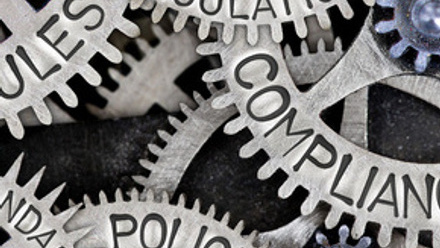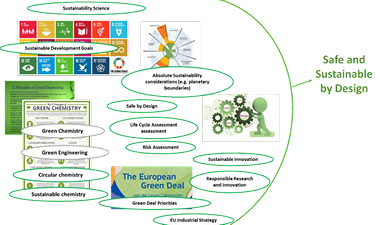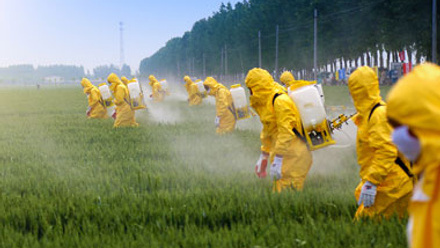Mercury Monitoring and Effectiveness Evaluation: Future Research Directions for a Legacy Contaminant
Sarah E. Janssen, Josh T. Ackerman, U.S. Geological Survey; Benjamin D. Barst, University of Alaska, Fairbanks; Collin A. Eagles-Smith, U.S. Geological Survey; Celia Y. Chen, Dartmouth College; Colleen M. Flanagan-Pritz, U.S. National Park Service
Mercury (Hg) contamination has been a persistent and ubiquitous issue worldwide for decades, resulting in adverse wildlife and human health impacts. Despite a large body of work on Hg cycling, there are still numerous unknowns associated with Hg methylation, bioaccumulation, and effects on wildlife in aquatic and terrestrial environments. Addressing these crucial data gaps is hindered by numerous complicating factors, indirectly affecting Hg cycling, exposure and health effects, including land cover alterations and food web changes, and interactions with other stressors (e.g., other contaminants, disturbance and climate change). Focused efforts addressing these factors, as well as ongoing initiatives to limit Hg releases into the environment (e.g., United Nations-Minamata Convention on Mercury), will need to be considered to further our understanding of the Hg cycle. Targeted efforts to integrate co-occurring ecosystem stressors into studies and creating more robust baseline datasets would improve assessments of how changes in Hg releases will alter food web Hg burdens. At the SETAC North America 44th Annual Meeting, which took place from 12–16 November 2023 in Louisville, Kentucky, the community of Hg researchers showcased ongoing Hg research and met to discuss potential next steps for Hg monitoring and data dissemination.
Presented Works
Twelve platform presentations and fifteen posters were presented as part of the session with a range of topics from isotope fingerprinting of Hg sources in the environment to Hg bioaccumulation pathways and avian risk assessment. Platform presentations included understanding Hg cycling in critical ecosystems including the Great Lakes, with presentations regarding biotic and abiotic factors driving bioaccumulation at the base of the food web in Lake Huron (Grace Armstrong, University of Wisconsin) and Lake Champlain (Vivien Taylor, Dartmouth College and Roxanne Karimi, Stoney Brook University), lake sediments in the U.S. (Ryan Lepak, U.S. Environmental Protection Agency), and western reservoirs (James Willacker, U.S. Geological Survey). Platform presentations highlighting Hg cycling in stream ecosystems included presentations on the impacts of forest defoliation on Hg bioaccumulation in stream food webs (Karen Kidd, McMaster University) and how shifts in Pacific salmon migration can alter continental-scale biotransport of contaminants and nutrients (Jessica Brandt, University of Connecticut). Across the nation, large-scale modeling assessments predicted Hg sources and bioaccumulation patterns using data collected for the Dragonfly Mercury Project (Collin Eagles-Smith, U.S. Geological Survey), a citizen science initiative led by partners at the National Park Service, U.S. Geological Survey, National Park Foundation, Appalachian Mountain Club and Dartmouth College. Additional platform presentations examined Hg bioaccumulation in birds (Matt Chumchal, Texas Christian University), MeHg detoxification in birds (Sam Lopez, University of Utah), temporal trends in seabird Hg contamination (Kimberlee Whitmore, Texas Christian University), and a review of Hg effects in birds and new toxicity reference values (Josh Ackerman, U.S. Geological Survey)
Poster presentations included research on Hg transfer from aquatic to terrestrial systems via invertebrates, Hg bioaccumulation in relation to co-stressors and landscape features, and Hg bioaccumulation in upper trophic-level marine predators.
Assessing Mercury Monitoring and Ways to Connect
In addition to scientific presentations, the Hg community also gathered with 35 Hg researchers at various career stages and with specialties across disciplines. Among a number of topics, the group had for an open discussion regarding the phases of the effectiveness evaluation of the Minamata Convention on Mercury, the international treaty on Hg. The Minamata Convention is being administered by the United Nations Environment Programme currently with 147 parties to the Convention. The goal is to protect human health and the environment from the adverse effects of mercury. The effectiveness evaluation process is the focus of the Open-Ended Scientific Group (OESG) and a panel of Technical Experts who are collecting Hg datasets to evaluate changes in concentrations in environmental, biological and human matrices. To begin this process, global Hg data are being collected to assess spatial and temporal patterns prior to the onset of Hg reductions. Data submissions are still being sought in order to establish the most complete collection possible of available Hg data to characterize global patterns or identify target ecosystems for Effectiveness Evaluation implementation. Our discussion group highlighted that additional datasets may be available to aid in the Minamata Convention Effectiveness Evaluation, but that communication and collaboration between federal, state, academic and industry partners will be vital for the success of this initiative. More information on the Minamata Convention and links to potential data submission can be found on the United Nations Programme website. In addition, Hg researchers at SETAC were informed about the upcoming International Conference on Mercury as a Global Pollutant (ICMGP), which will be held from 21–26 July in Capetown, South Africa. The theme of this ICMGP is “From Minamata to Africa and beyond: Addressing mercury challenges in global environment change.” Conference organizers are accepting abstract submissions until 15 January 15.
Our discussion panel also highlighted a disconnect between atmospheric Hg monitoring efforts and biological assessments, specifically the difficulties in linking biological Hg concentrations with atmospheric or water quality changes. It was noted that the disconnect may arise from a lack of spatial overlap in data across matrices (e.g., water, sediment, air and biota) and that holistic, multi-matrix approaches to studying Hg cycling have been limited to priority ecosystems (e.g., Great Lakes and Florida Everglades). Furthermore, there are critical Hg data gaps in arid environments, coastal areas and regions susceptible to permafrost melt across the U.S., which may see the most dramatic shifts in Hg cycling due to climate change. The discussion yielded the idea of having a forum for exchanging information as well as developing an integrative approach for future Hg monitoring and research efforts across the U.S. and Canada. This effort would use the National Atmospheric Deposition Program (NADP) as a backbone for Hg deposition but would require additional input from interdisciplinary Hg researchers to integrate data across matrices. Currently this effort is hosted under the Mercury in the Environment and Links to Deposition Science Committee or MELD, but similar to international data collection efforts, input from and collaboration between Hg researchers across abiotic and biological matrices are vital.
Unfortunately, we cannot highlight all the great science and discussions that were part of this year’s SETAC Hg session, but given the sustained interest in the subject and ongoing changes to Hg mitigation efforts, we are committed to providing a forum to discuss current and future directions in Hg research. Accordingly, initial discussions are underway regarding a future Hg session at the SETAC North America 45th Annual Meeting, which will be held from 20–24 October in Fort Worth, Texas.
Author’s contact: [email protected]





